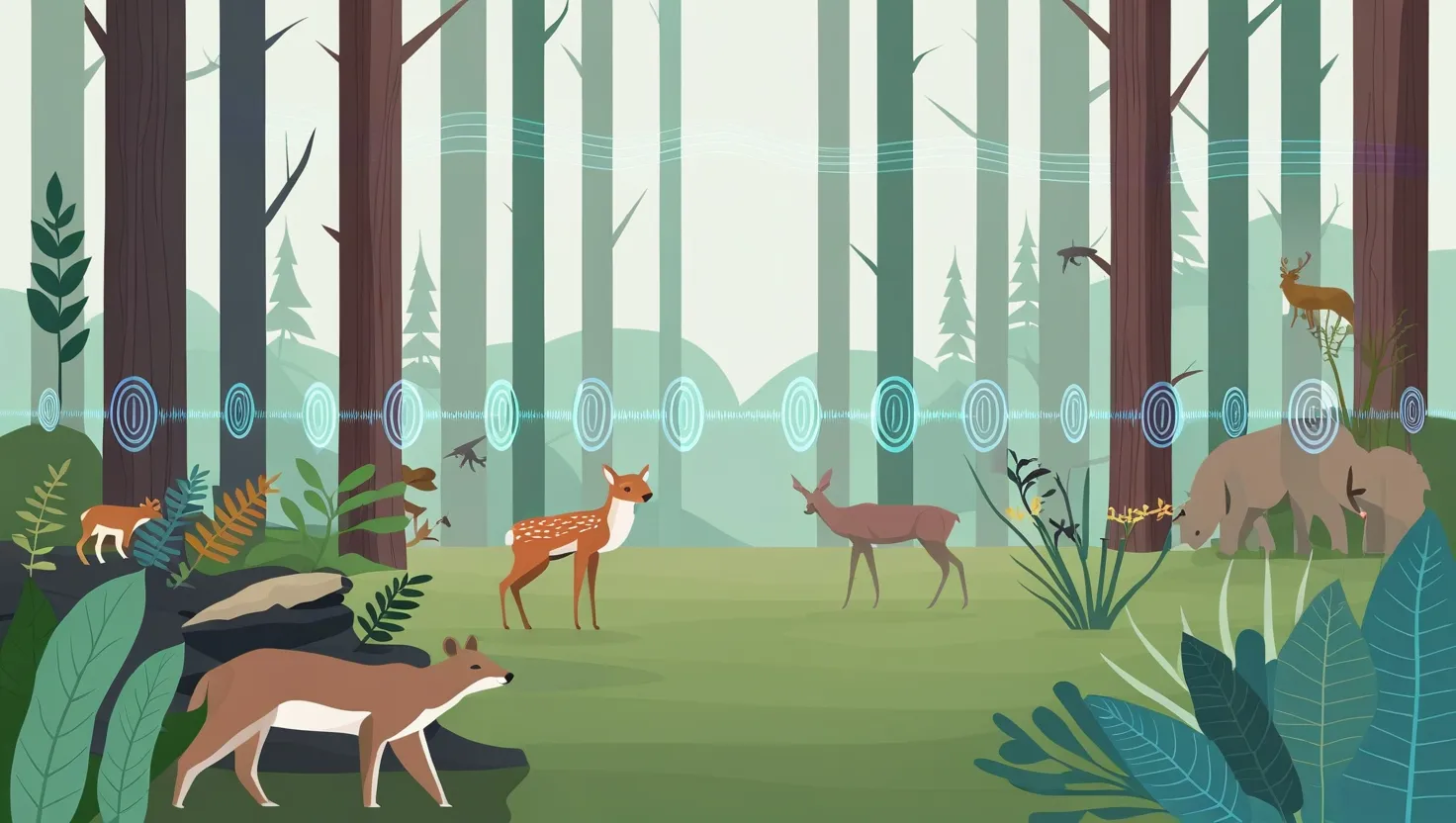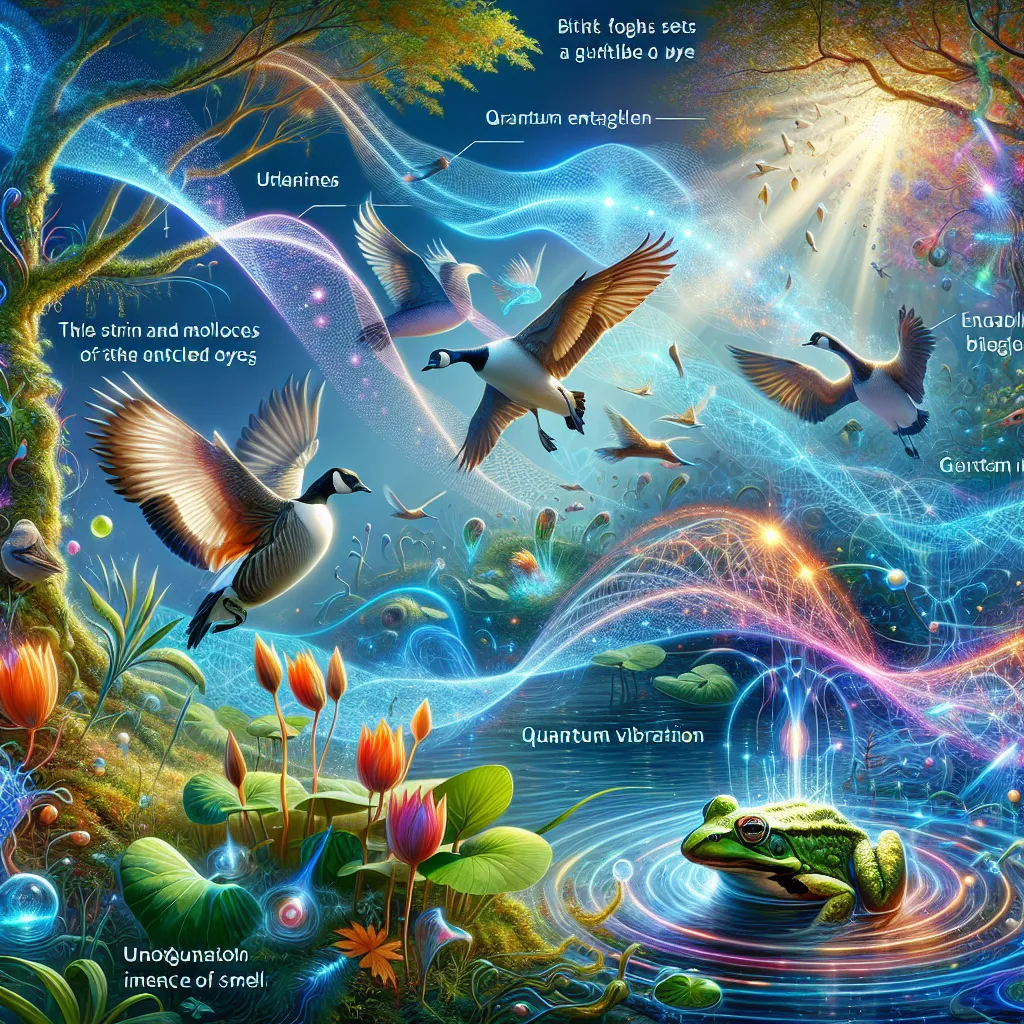As I step into the heart of a forest, the cacophony of sounds envelops me – the chirping of birds, the rustling of leaves, and the distant roar of a waterfall. But there’s more to this symphony than what meets the ear. Beneath the surface of our audible world, nature is filled with hidden sounds that play a crucial role in the survival and communication of its inhabitants.
The World of Bioacoustics
Bioacoustics, the study of sounds produced by or affecting living organisms, reveals a complex network of communication that is both fascinating and essential. In undisturbed natural environments, creatures vocalize in a highly organized manner, much like the instruments in an orchestra. Each species occupies its own unique sonic zone, ensuring that no single voice drowns out the others. This delicate acoustic fabric is so well-defined that when graphically represented, it resembles the notes on a musical sheet.
For instance, in a healthy habitat, insects might occupy one sonic zone, while birds, mammals, and amphibians occupy others. This system allows each voice to be heard distinctly, enabling each creature to thrive through its vocalizations as much as through any other aspect of its being. This biophony, or creature choir, is not just a beautiful phenomenon but also a vital gauge of a habitat’s health, conveying data about its age, stress levels, and other valuable information.
The Silent Threat
However, this miraculous biophony is under serious threat. Human activities, such as deforestation and the increasing noise from urbanization and air traffic, are disrupting these vital communications. When a jet plane flies over a pond, it breaks the synchronized chorus of frogs, making them momentarily stand out and vulnerable to predators. This disruption can have devastating consequences; during one such incident, it took nearly 45 minutes for the toads to reestablish their protective chorus, and in that time, predators like coyotes and owls had already taken advantage of the silence.
In the Amazon Basin, a multi-engine jet flying low over the jungle interrupted the dawn chorus of birds and insects, causing many creatures to stop vocalizing altogether. This momentary break in the biophony left many creatures exposed to opportunistic predators, highlighting the critical role these sounds play in their survival.
Plants: The Silent Communicators
While animals are well-known for their use of sound in communication, plants are often overlooked as silent observers. However, recent research suggests that plants may also use sound to communicate and gather information about their environment. Plants emit sounds, albeit at frequencies often beyond human hearing, and these sounds can be triggered by various environmental factors such as rain or wind.
For example, when raindrops hit plant leaves, they produce audible sounds, and even the internal processes within plant cells can generate vibrations that translate into sound waves. These sounds may have adaptive value, affecting responses in other plants and animals. Plants have been shown to respond to sound waves by modifying their growth rates, altering levels of important phytohormones, and regulating antioxidant enzymes.
The Cosmic Connection
The idea that nature’s sounds mirror a larger cosmic harmony is not new. Johannes Kepler, the renowned mathematician and astronomer, believed that music reflected the cosmos. He envisioned the “music of the spheres,” where the motions of planets and heavenly bodies were reflected in polyphonic music. Kepler even invited composers to create music that incorporated the harmonies he discovered in planetary data, suggesting a deep connection between the natural world and the world of sound.
This cosmic perspective adds a layer of mystery to the bioacoustic world. If the natural sounds we hear are part of a larger symphony that includes the movements of celestial bodies, then understanding these sounds could unlock secrets not just about our environment but also about the universe itself.
Human Impact and the Future
Human activity is not only disrupting the natural soundscape but also denying us an essential experience of the wild. The constant presence of unwanted noise makes it difficult for humans to communicate effectively, even among themselves. This has significant effects on our culture, from the political to the social.
As we continue to encroach on natural habitats and increase noise pollution, we risk moving towards a silent spring, summer, fall, and winter. The loss of these natural soundscapes is not just an environmental issue but also a cultural and personal one. It deprives us of a connection to our organically resonant surroundings, a connection that is essential for our well-being and understanding of the world.
Tuning Into Nature’s Secret Radio
So, how can we tune into this hidden world of sound? By venturing into undisturbed natural environments with a keen ear and an open mind. Listening to the biophony of a forest or a pond can be a transformative experience, revealing a world of communication and survival that is both intricate and beautiful.
Technology also plays a crucial role. Advanced recording and analysis tools allow scientists to capture and study these sounds in detail, revealing patterns and communications that were previously unknown. For instance, the use of “voice prints” to graphically represent the sounds of different species has shown how each creature contributes to the overall soundscape.
The Unseen World
As we delve deeper into the world of bioacoustics, we begin to realize that there is much more to nature than what we can see or hear. The subtle sounds emitted by plants and animals are not just background noise; they are vital components of a complex communication network.
Understanding these hidden frequencies could provide us with new insights into how ecosystems function and how we can better protect them. It could also lead to novel approaches in conservation, where preserving the natural soundscape becomes as important as preserving the physical habitat.
A World of Conversation
Are we missing out on a whole world of conversation happening around us? The answer is yes. The natural world is filled with sounds that are crucial for the survival and communication of its inhabitants. These sounds are not just random noises; they are part of a sophisticated system that has evolved over millions of years.
By tuning into this secret radio, we not only gain a deeper appreciation for the natural world but also uncover secrets about our environment and possibly even our own biology. The bioacoustic whispers of nature are a reminder that there is still much to discover and much to protect in the world around us.
In the end, it’s not just about the sounds we hear; it’s about the world we are a part of – a world where every creature, from the tiniest insect to the mightiest tree, contributes to a grand symphony of survival and communication. And as we listen more closely, we might just find ourselves becoming part of this symphony, harmonizing with nature in ways we never thought possible.






